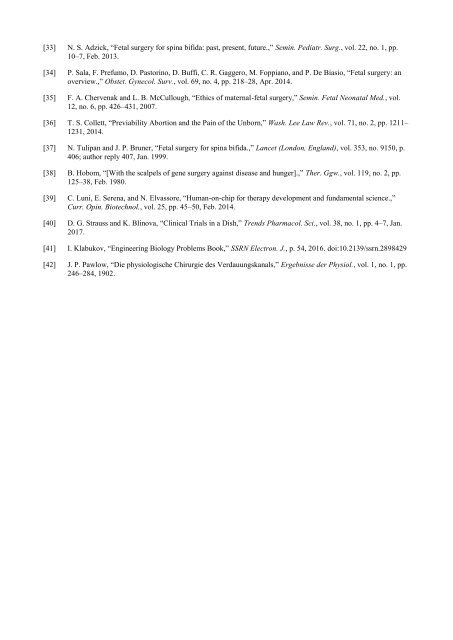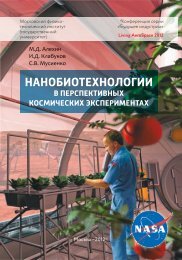Foundations for Molecular and Enzymatic Functional Surgery
This paper presents an approach of molecular and enzymatic surgery for treatment of human diseases, including opportunity for use of systemic biology methods in planning of surgical interventions, possible biological components of a “molecular scalpel”, and problems of standardization, medical ethics and clinical trials of the new pharma-surgical toolbox. In conclusions is proposed to consider of molecular and enzymatic surgery methods as realization of the principles of “functional surgery” and also further development of fast track surgery with attaining the modern concept of a personalized approach to surgical treatment of the patient.
This paper presents an approach of molecular and enzymatic surgery for treatment of human diseases, including opportunity for use of systemic biology methods in planning of surgical interventions, possible biological components of a “molecular scalpel”, and problems of standardization, medical ethics and clinical trials of the new pharma-surgical toolbox. In conclusions is proposed to consider of molecular and enzymatic surgery methods as realization of the principles of “functional surgery” and also further development of fast track surgery with attaining the modern concept of a personalized approach to surgical treatment of the patient.
Create successful ePaper yourself
Turn your PDF publications into a flip-book with our unique Google optimized e-Paper software.
[33] N. S. Adzick, “Fetal surgery <strong>for</strong> spina bifida: past, present, future.,” Semin. Pediatr. Surg., vol. 22, no. 1, pp.<br />
10–7, Feb. 2013.<br />
[34] P. Sala, F. Prefumo, D. Pastorino, D. Buffi, C. R. Gaggero, M. Foppiano, <strong>and</strong> P. De Biasio, “Fetal surgery: an<br />
overview.,” Obstet. Gynecol. Surv., vol. 69, no. 4, pp. 218–28, Apr. 2014.<br />
[35] F. A. Chervenak <strong>and</strong> L. B. McCullough, “Ethics of maternal-fetal surgery,” Semin. Fetal Neonatal Med., vol.<br />
12, no. 6, pp. 426–431, 2007.<br />
[36] T. S. Collett, “Previability Abortion <strong>and</strong> the Pain of the Unborn,” Wash. Lee Law Rev., vol. 71, no. 2, pp. 1211–<br />
1231, 2014.<br />
[37] N. Tulipan <strong>and</strong> J. P. Bruner, “Fetal surgery <strong>for</strong> spina bifida.,” Lancet (London, Engl<strong>and</strong>), vol. 353, no. 9150, p.<br />
406; author reply 407, Jan. 1999.<br />
[38] B. Hobom, “[With the scalpels of gene surgery against disease <strong>and</strong> hunger].,” Ther. Ggw., vol. 119, no. 2, pp.<br />
125–38, Feb. 1980.<br />
[39] C. Luni, E. Serena, <strong>and</strong> N. Elvassore, “Human-on-chip <strong>for</strong> therapy development <strong>and</strong> fundamental science.,”<br />
Curr. Opin. Biotechnol., vol. 25, pp. 45–50, Feb. 2014.<br />
[40] D. G. Strauss <strong>and</strong> K. Blinova, “Clinical Trials in a Dish,” Trends Pharmacol. Sci., vol. 38, no. 1, pp. 4–7, Jan.<br />
2017.<br />
[41] I. Klabukov, “Engineering Biology Problems Book,” SSRN Electron. J., p. 54, 2016. doi:10.2139/ssrn.2898429<br />
[42] J. P. Pawlow, “Die physiologische Chirurgie des Verdauungskanals,” Ergebnisse der Physiol., vol. 1, no. 1, pp.<br />
246–284, 1902.












